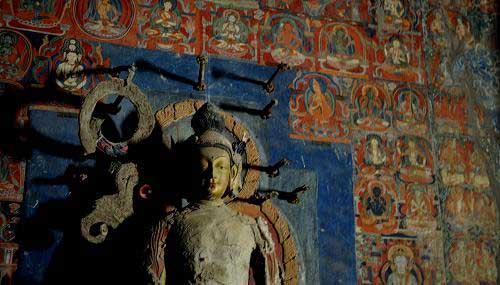Explore the ruins of Guge Kingdom
CNTV.CN
Source - http://www.kaogu.cn/en/detail.asp?ProductID=3004
Located in Zanda County of the Tibet Autonomous Region, the Ruins of Guge Kingdom are like the Old Summer Palace of Tibet.
Although the kingdom encountered both civil strife and foreign attacks that fragmented the once prosperous state, it was not totally lost. Much can be learned about the ancient kingdom by studying its remains. Now, let's get an update about the ongoing maintenance and protection project at the site.

CIV 108 - 208 : Civilisations de la Chine antique / Ancient China : Origins to Empire
Established in around the 10th century, the Guge Kingdom was founded by one branch of a nearby fallen kingdom. During its 700-year history, the Guge Kingdom played an important part in the economic and cultural development of Tibet. Besides advocating Buddhism, the Kingdom also served as a major center for Tibet's foreign trade.

The Ruins of Guge Kingdom are located on a mountain more than 300 meters high. Although previous explorers have found fortresses, secret paths, pagodas and granaries, most of the rooms excavated have collapsed roofs, leaving only the walls standing. The remaining buildings are five superior temples and palaces: the White Temple, Red Temple, Samsara Temple, Imperial Palace and Assembly Palace. These structures have many inscriptions, statues and murals displayed inside. Their great research value has fixed the ruins onto the first group of National-Level Cultural Heritage sites.

Li Xingguo, director of Ngari Bureau of Cultural Relics, said, "The ruins of Guge Kingdom are essential resources of the region's historical and archeological studies. That's why the local government supports our project. So far the maintenance work is focusing on the five temples and palaces, especially the murals."

The most complete and valuable artifacts remaining are the murals featuring portraits of Sakyamuni, the King and Queen of Guge and other royal servants. These murals are painted in typical Tibetan style, and some of the techniques are believed to be lost arts.
So far, the maintenance team has used one of the oldest construction methods to fill in the gaps on the walls to prevent further cracking, and the whole mural reparation project will kick off in 2014. Work on the temple and palace sites is expected to conclude this year.